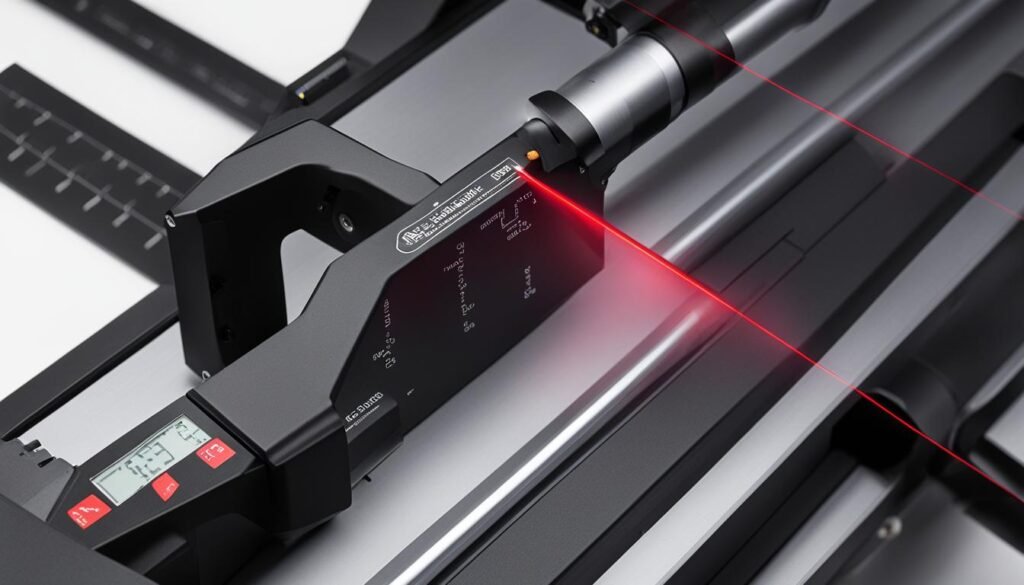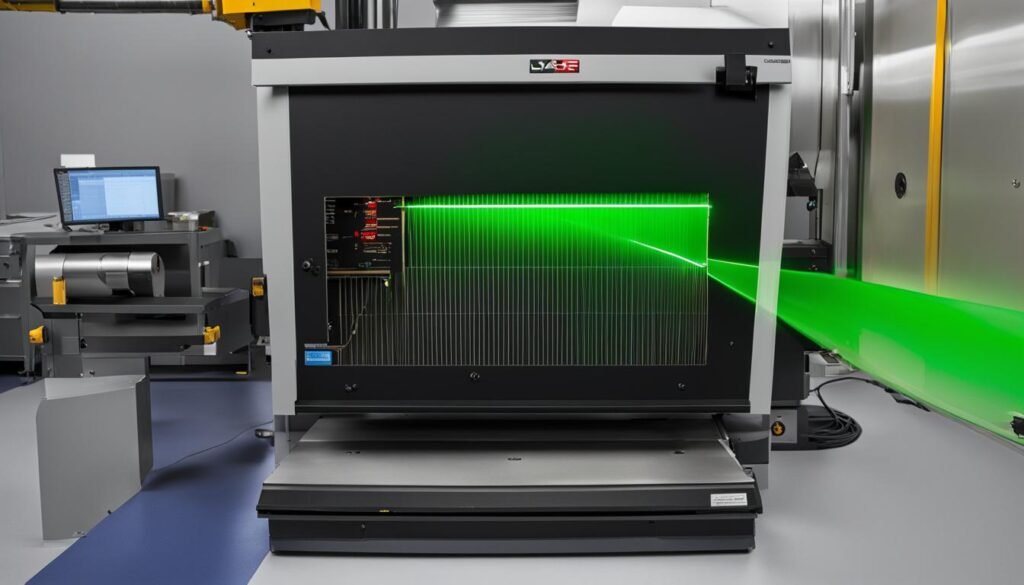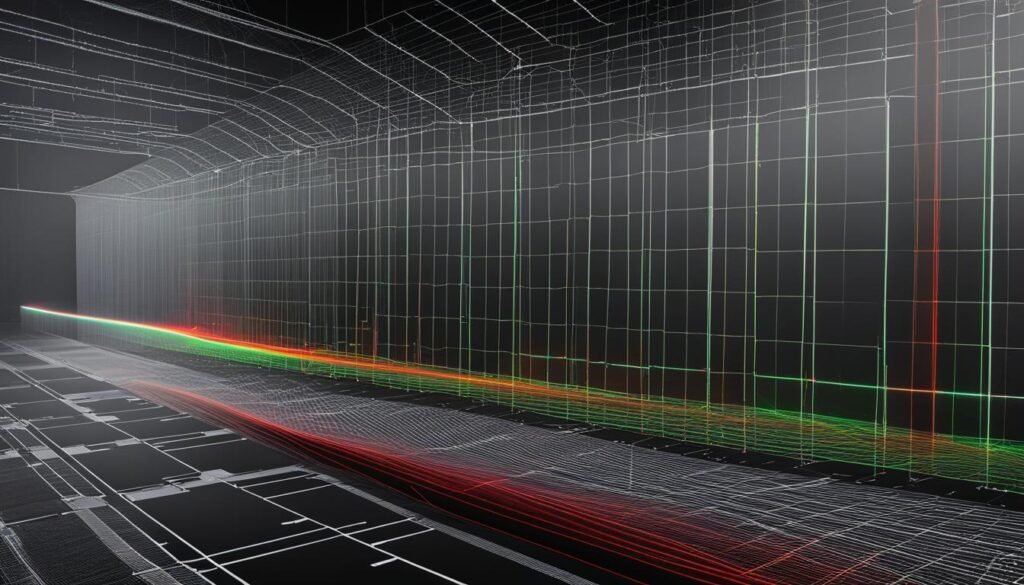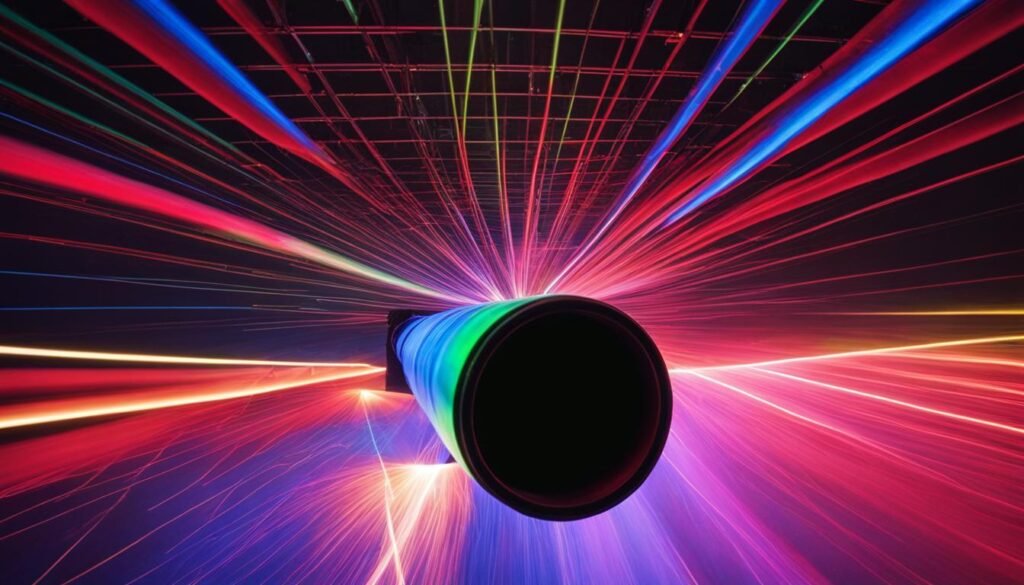Laser beam profiling is a crucial tool in various laser applications, guiding the design and fabrication of lasers to achieve the desired beam characteristics. A laser beam profiler captures, displays, and records the intensity distribution of a laser beam, allowing for monitoring and optimization of beam quality. Laser beam profilers are essential in industries such as laser cutting, welding, engraving, and scientific research, helping to ensure accurate and efficient laser performance.
Contents
- 1 What Is a Laser Beam Profiler and How Does It Work?
- 2 The Importance of Laser Beam Profiling in Laser Material Processing
- 3 Laser Beam Profiling in Laser Engraving Applications
- 4 Laser Beam Profiler Key Parameters and Measurement Techniques
- 5 Measuring Techniques for Laser Beam Profilers
- 6 Conclusion
- 7 FAQ
- 7.1 What is laser beam profiling?
- 7.2 Why is laser beam profiling important?
- 7.3 What parameters can laser beam profilers measure?
- 7.4 How do laser beam profilers work?
- 7.5 What industries benefit from laser beam profiling?
- 7.6 What are the advantages of camera-based profiling methods?
- 7.7 How do laser beam profilers contribute to laser material processing?
- 7.8 What are the applications of laser beam profiling?
- 7.9 How can laser beam profiling contribute to increased precision and efficiency?
- 7.10 What are the latest developments in laser beam profiling technologies?
- 8 Source Links
Key Takeaways:
- Laser beam profiling is vital for optimizing laser performance in various industries.
- Beam analysis and profiling techniques enable accurate measurement of beam characteristics.
- Laser beam diagnostics help monitor and optimize beam quality for efficient laser performance.
- Beam profiling software and measurements allow for precise laser beam characterization.
- Ensuring laser beam quality is crucial for achieving accurate and efficient laser applications.
What Is a Laser Beam Profiler and How Does It Work?
A laser beam profiler is a device used to capture, display, and record the intensity distribution of a laser beam with respect to a plane transverse to its direction of propagation. It provides valuable insights into the shape, size, energy level, and uniformity of the beam. Laser beam profilers use camera imaging or photodetector techniques to measure the beam’s intensity profile. They can analyze key parameters such as beam diameter, shape, quality, divergence, astigmatism, and jitter. Laser beam profilers play a vital role in ensuring the desired spatial characteristics of a laser beam for various applications.
By capturing the intensity distribution of a laser beam, a laser beam profiler enables precise analysis of its beam characteristics. This information is crucial in laser applications such as laser cutting, welding, engraving, and laser-based manufacturing processes. Laser beam profiling helps optimize the performance of these applications by providing a comprehensive understanding of the beam’s spatial characteristics. This allows operators to fine-tune beam focusing optics, ensure accurate beam alignment, and achieve the desired beam quality and intensity for precise cuts, welds, or engraving.
Laser beam profilers employ different techniques to measure and analyze laser beams. Camera-based profiling methods utilize CCD or CMOS cameras to capture a 2D image of the beam’s intensity profile. This method offers high resolution and a complete image of the beam. Alternately, scanning-slit methods involve moving a narrow slit across the beam path, while knife-edge scanning methods use a sharp blade to intercept the beam. These techniques provide accurate measurements of beam shape and size. Proper image processing and data computations are key to ensuring the accuracy and precision of laser beam profiling results.
Table: Key Parameters Measured by Laser Beam Profilers
| Parameter | Description |
|---|---|
| Beam Diameter | The width or diameter of the laser beam at a particular point along its path. |
| Beam Shape | The overall shape or profile of the laser beam, such as circular, elliptical, or rectangular. |
| Beam Quality | A measure of how well the laser beam maintains its desired characteristics, including focus and intensity distribution. |
| Beam Divergence | The extent to which the laser beam spreads out as it propagates, typically expressed in milliradians (mrad). |
| Astigmatism | A measure of how the focal length of the laser beam varies along different axes, resulting in distortion or aberration. |
| Jitter | The random or undesired movement or variation in the laser beam’s position or intensity. |
Laser beam profiling is an essential tool in laser applications across various industries, including laser cutting, welding, engraving, and medical and scientific research. By accurately capturing and analyzing the spatial characteristics of laser beams, laser beam profilers enable precise optimization of beam performance and ensure the desired beam quality for efficient and accurate laser operations.
The Importance of Laser Beam Profiling in Laser Material Processing
Laser beam profiling plays a crucial role in laser material processing, providing precision measurement and optimization for efficient and accurate results. By analyzing the beam quality, shape, size, and energy intensity distribution, laser beam profilers assist in achieving precise cuts and material removal. Laser cutting, in particular, benefits greatly from laser beam profiling as it ensures the desired edge quality and efficiency.
When it comes to laser material processing, the beam shape and size are critical factors that directly impact the quality and efficiency of the process. Laser beam profilers help operators determine the appropriate beam focusing optics to achieve the desired beam characteristics. By aligning the laser beam accurately and optimizing beam shape and size, laser material processing can be carried out with precision, resulting in high-quality products and minimal material waste.
Accurate beam profiling measurements also contribute to the overall performance and productivity of laser material processing. By monitoring the energy intensity distribution and optimizing the beam focusing, operators can ensure consistent and reliable results. Laser beam profilers allow for real-time adjustments and feedback, enabling operators to make necessary modifications and maintain optimal performance throughout the processing.
| Benefits of Laser Beam Profiling in Laser Material Processing |
|---|
| Provides precision measurement for accurate beam optimization |
| Ensures desired edge quality and efficiency in laser cutting |
| Helps align the laser beam and optimize beam shape and size |
| Contributes to high-quality products and minimal material waste |
| Enables real-time adjustments and feedback for optimal performance |
In summary, laser beam profiling is of utmost importance in laser material processing. It enables precise measurement, beam optimization, and real-time adjustments for accurate and efficient processing. By utilizing laser beam profilers, operators can ensure consistent edge quality, minimal material waste, and overall improved productivity in laser material processing applications.
Laser Beam Profiling in Laser Engraving Applications
Laser beam profiling plays a crucial role in optimizing laser engraving for dimensional accuracy and quality. By analyzing and measuring the laser beam’s shape, size, divergence, and intensity distribution, laser beam profilers ensure precise material removal and consistent engraving results.
One of the key factors in laser engraving is the laser beam shape, which directly influences the engraved pattern’s fidelity and clarity. Laser beam profilers allow operators to visualize and assess the beam shape, enabling them to adjust the engraving parameters for optimal performance.
Additionally, laser beam profilers help determine the beam size and divergence, which impact the beam’s focus and power density at the engraving point. Controlling these parameters ensures that the laser beam delivers the appropriate energy to achieve the desired engraving depth and quality.
Table: Key Parameters for Laser Beam Profiling in Laser Engraving
| Parameter | Description |
|---|---|
| Laser Beam Shape | Determines the fidelity and clarity of the engraved pattern. |
| Beam Size | Impacts the beam’s focus and controls the engraving depth. |
| Beam Divergence | Influences the beam’s power density at the engraving point. |
| Intensity Distribution | Ensures consistent material removal and engraving quality. |
“Laser beam profiling allows us to precisely control the beam’s characteristics, ensuring high-quality engraving results. By optimizing the beam shape, size, divergence, and intensity distribution, we can achieve exceptional dimensional features and engraving quality.”
By leveraging laser beam profiling, engraving processes can be fine-tuned for various materials, including metals, plastics, and ceramics. The ability to adjust the laser beam parameters based on material properties enables accurate and efficient material removal, reducing the risk of damage or overcutting.
In conclusion, laser beam profiling plays a crucial role in laser engraving applications by providing insights into the beam’s shape, size, divergence, and intensity distribution. By optimizing these parameters, operators can achieve precise and consistent engraving results across different materials, leading to enhanced dimensional features and engraving quality.
Laser Beam Profiler Key Parameters and Measurement Techniques

When it comes to laser beam profiling, there are several key parameters that are measured to characterize the spatial and intensity distribution of the beam. These parameters include beam astigmatism, beam quality, beam width, beam divergence, beam jitter, and spatial characteristics. By measuring and analyzing these parameters, laser beam profilers provide valuable insights into the performance and quality of laser beams.
Beam astigmatism refers to the difference in focal length along two perpendicular axes of the laser beam. This parameter is crucial in applications where precise focusing is required, such as laser cutting and engraving. Beam quality, often represented by the M² value, describes the spatial and coherence properties of the beam, providing information about its overall performance. Beam width and beam divergence determine the size and spread of the beam, which are essential considerations in applications like laser material processing and scientific research.
Beam jitter, also known as beam wander, measures the stability and consistency of the laser beam over time. This parameter is particularly important in applications where precise positioning is necessary, such as laser micro-machining and optical communication. Finally, spatial characteristics encompass various aspects of the beam’s profile, including intensity distribution, mode structure, and collimation. By understanding these spatial characteristics, laser beam profilers enable users to optimize their laser systems for enhanced precision and efficiency.
Laser Beam Profiler Measurement Techniques
Laser beam profilers employ different measurement techniques to capture and analyze the parameters mentioned above. One popular method is the camera-based profiling technique, where a CCD or CMOS camera captures a 2D image of the beam’s intensity profile. This technique allows for a complete visualization of the beam and provides high resolution for detailed analysis.
Another common technique is the scanning-slit method, which involves moving a narrow slit across the beam path. The transmitted light through the slit is then measured, allowing for the determination of beam width and divergence. The knife-edge scanning method is also used, where a sharp blade intercepts the beam, and the incident power is measured to characterize the beam.
Each measurement technique has its advantages and limitations, and the choice of technique depends on factors such as accuracy requirements, beam characteristics, and specific application needs. Regardless of the technique used, accurate and reliable beam measurement is essential in optimizing laser performance and ensuring precise results.
| Parameter | Description |
|---|---|
| Beam Astigmatism | Measures the difference in focal length along two perpendicular axes of the beam. |
| Beam Quality | Describes the spatial and coherence properties of the beam. |
| Beam Width | Determines the size of the beam. |
| Beam Divergence | Measures the spread of the beam. |
| Beam Jitter | Assesses the stability and consistency of the beam over time. |
| Spatial Characteristics | Encompass various aspects of the beam’s profile, including intensity distribution, mode structure, and collimation. |
“Accurate and reliable beam measurement is essential in optimizing laser performance and ensuring precise results.”
Measuring Techniques for Laser Beam Profilers

Laser beam profilers employ different techniques to measure and characterize laser beams. These techniques provide valuable insights into the spatial and intensity distribution of the beams, aiding in beam optimization and performance analysis. Three commonly used methods for laser beam profiling are the camera-based profiling method, scanning-slit method, and knife-edge scanning method.
The camera-based profiling method utilizes a CCD or CMOS camera to capture a 2D image of the laser beam’s intensity profile. This approach provides a comprehensive view of the beam, allowing for detailed analysis of its shape, size, and intensity distribution. With high-resolution imaging and advanced image processing algorithms, camera-based profiling offers accurate and reliable beam measurements.
The scanning-slit method involves moving a narrow slit across the beam path while simultaneously measuring the transmitted or diffracted light. By analyzing the changes in light intensity as the slit scans, this method determines beam parameters such as beam width, divergence, and astigmatism. The scanning-slit technique is known for its high accuracy and is particularly useful for characterizing beams with complex spatial profiles.
The knife-edge scanning method employs a sharp blade or edge that intercepts the laser beam. By measuring the incident power as the blade scans through the beam, this method calculates the beam’s spatial profile, including its width and energy distribution. The knife-edge scanning technique is especially effective for determining beam properties with high precision and can be used to analyze both continuous and pulsed laser beams.
The Advantages and Limitations of Each Technique
| Technique | Advantages | Limitations |
|---|---|---|
| Camera-based profiling | Comprehensive beam analysis with high resolution | Limited accuracy for low-intensity beams |
| Scanning-slit method | Accurate measurement of beam parameters | Challenging for highly divergent or non-uniform beams |
| Knife-edge scanning method | Precise determination of beam profiles | Requires careful alignment and can be time-consuming |
In summary, laser beam profilers utilize various measuring techniques to analyze and optimize laser beams. The camera-based profiling method provides a complete image of the beam, while the scanning-slit and knife-edge scanning methods offer precise measurements of beam parameters. Each technique has its advantages and limitations, and selecting the most suitable method depends on the specific requirements of the laser application.
Conclusion
Laser beam profiling is an essential technology for optimizing laser performance and achieving precision in a wide range of applications. With continuous innovations in beam measurement technologies, industries such as additive manufacturing and industrial materials processing are benefitting from advanced tools and techniques.
Accurate power measurement and beam profiling contribute to efficient production processes, reduced downtime, and increased productivity. By understanding the challenges of beam measurement and employing optimization strategies, users can harness the full potential of laser beams for enhanced precision and efficiency.
As the demand for high-quality laser applications continues to grow, beam measurement technologies will play an even more crucial role. Advancements in laser beam profiling will address the unique needs of emerging industries, ensuring optimal beam characteristics, power control, and overall system performance.
By embracing the power of laser beam profiling and leveraging the latest innovations in beam measurement technologies, industries can unlock new possibilities, improve manufacturing processes, and achieve remarkable results in laser-based applications.
FAQ
What is laser beam profiling?
Laser beam profiling is the process of capturing, displaying, and recording the intensity distribution of a laser beam with respect to a plane transverse to its direction of propagation.
Why is laser beam profiling important?
Laser beam profiling is crucial in various laser applications as it helps optimize beam quality, ensure accurate performance, and guide the design and fabrication of lasers to achieve desired characteristics.
What parameters can laser beam profilers measure?
Laser beam profilers can measure parameters such as beam diameter, shape, quality, divergence, astigmatism, and jitter, providing valuable insights into the spatial characteristics of the beam.
How do laser beam profilers work?
Laser beam profilers use camera imaging or photodetector techniques to capture the intensity profile of a laser beam. These techniques allow for the measurement and analysis of the beam’s spatial characteristics.
What industries benefit from laser beam profiling?
Laser beam profiling is essential in industries such as laser cutting, welding, engraving, and scientific research, where precise beam characteristics are crucial for accurate and efficient performance.
What are the advantages of camera-based profiling methods?
Camera-based profiling methods provide a complete image of the beam and offer high resolution, allowing for detailed analysis and accurate measurement of the beam’s intensity distribution.
How do laser beam profilers contribute to laser material processing?
Laser beam profilers help optimize laser cutting and engraving processes by ensuring proper beam focusing, delivering the required power density, and maintaining consistent spatial characteristics of the beam.
What are the applications of laser beam profiling?
Laser beam profiling is used in laser cutting, welding, engraving, laser-based manufacturing processes, medical research, and scientific research, among other applications.
How can laser beam profiling contribute to increased precision and efficiency?
By accurately measuring and analyzing key parameters of a laser beam, laser beam profiling enables users to optimize beam quality, power, shape, and energy, leading to enhanced precision and increased efficiency in laser applications.
What are the latest developments in laser beam profiling technologies?
Laser beam profiling technologies continue to evolve to meet the specific demands of emerging industries such as additive manufacturing and industrial materials processing, contributing to efficient production and reduced downtime.



